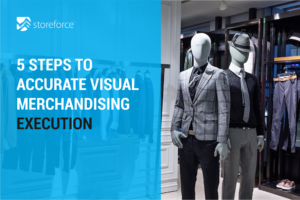Blog Category
Stores as ‘Markets’ in the World of Unified Commerce
January 22, 2018 in Thought Leadership, Unified Commerce

In a Unified Commerce world, Stores should be thought of as Markets. And the technology supporting the stores and head office needs to embrace and leverage this view in order to enable effective decision making.
The Brick and Mortar Store Remains the Retailer’s Single Most
Important Brand Touchpoint
Customers spend more time making an in-store purchase than an online purchase, and the in-store experience is personal and physical. In Unified Commerce, there are generally two avenues to demand generation (store and online). Two avenues to order fulfillment (instant at the Store or delayed via a shipment from DC/another Store). And, two avenues for returns (Store and ship-to-DC). To address the various combinations of demand generation, fulfillment, and return options, Retailers should look at the Store as a Market.
This means:
- Ascribing a Market (Store) to each online sale based on geolocation,
- Having multiple sales ‘views’ for a Store: (a) brick and mortar sales, (b) market online sales, and (c) an aggregated total market sales; and
- Tracking both sales and return metrics for each view.
A Store that Excels at Being a Brand Ambassador Will See a Lift in Their Aggregated Market Sales
A Store that excels at being a brand ambassador will see a lift in their aggregated Market sales, even if their brick and mortar sales are declining.
Measuring how this shift is occurring in each Market allows Field Managers to make better, more informed decisions on performance opportunities. There is built-in friction between brick and mortar and e-commerce channels, and it will be important to align goals to drive performance across all channels.
E-commerce is viewed as the rising star with annual double-digit growth, while declining traffic at brick and mortar Stores can lead to year over year comp brick and mortar decreases. Further, some more antiquated POS systems can’t separate returns generated by the store versus returns generated by online purchases. When e-commerce sales ranged between 1 and 5% of a Retailer’s sales, the headaches caused at Store level were barely noticeable – now that the percentage of online sales has increased significantly, the impact of online returns on a Store’s sales (if not separated out) is so material that Store Managers are worried about losing their bonuses as a result of online returns at their store.
The Ability to Align Goals Relies on How a Retailer Will Use Technology to Measure and Reward Performance Within Each of the Channels
While the jury is still out on some of the finer details, the trends we see are two-fold:
- More Retailers are shifting towards rewarding Stores for demand generation, regardless of the method of fulfillment; and
- The old method of expecting Stores to deal with external fulfillment (both click & collect and ship from store) out of existing labor budgets has given way to selectively adding labor hours based on a combination of an external fulfillment forecast as well as each Store’s available capacity to address orders within the existing labor budget.
Sales Performance Coaching and Reporting Technology will Need to Break Down the Data Down to View Stores as a Markets.
Technology, specifically sales performance coaching and reporting technology, will need to break down the data down to view Stores as a Markets.
This will give Retailers the ability to understand both the impact and the relevance of Stores in a Unified Commerce World, and ultimately drive the performance and customer experience needed that will allow them to continue to compete and thrive.
Recent Blog Posts

Retail – A marathon with checkpoints
Treat success in RETAIL like you are running a marathon It is challenging but doable Look at this blog like a race Throughout the race, there are different checkpoints Each checkpoint is an...
WEITERLESEN
Five Steps to Accurate Visual Merchandising Execution
Consumers may believe they are purchasing only products, but silently, they are also purchasing the shopping experience The shopping experience is highly influenced by visual merchandising...
WEITERLESEN
Four Ways Having Robust Retail Task Management Tools Can Benefit Store Operations
Managing tasks and scheduling them down to a store level can be complex However, it is also essential in the modern retail landscape Specialty retailers around the world are turning to task...
WEITERLESENVereinbaren Sie noch heute einen Beratungstermin mit
unseren Einzelhandelsexperten
Kontaktieren Sie uns noch heute, um in einem 15-minütigen Gespräch zu besprechen, wie StoreForce Sie dabei unterstützen kann, Ihr Geschäft leistungsfähiger zu machen – und es kostet weniger als eine Transaktion pro Woche! Erfahren Sie, wie Einzelhändler auf der ganzen Welt ihre Leistung und das Kundenerlebnis mit unserer exklusiv für den Fachhandel entwickelten Lösung steigern.